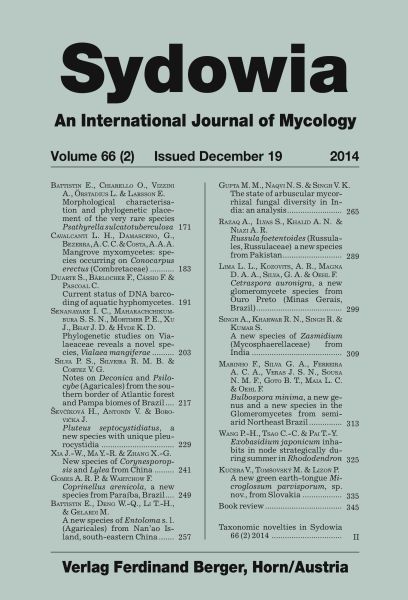
Sydowia Vol. 66/2 E-Book/S 191-202
Current status of DNA barcoding of aquatic hyphomycetes
Download-Artikel
Artikel Nr 2484
Preis 8,25 €
Lieferstatus 

Buchbeschreibung
Duarte S., Bärlocher F., Cássio F. & Pascoal C. (2014) Current status of DNA barcoding of aquatic hyphomycetes. – Sydowia 66 (2): 191–202.DNA barcoding is a rapid diagnostic approach in which short DNA sequences (ca. 600 bp) – the DNA barcodes – are used for species identification. Ideally, barcodes are sufficiently variable to distinguish closely related species and are flanked by conserved regions to allow the use of group-specific primers. Fungi play pivotal roles in ecosystems and the adoption of culture-independent methods based on nucleic acids extracted directly from environmental samples has become increasingly important to examine their diversity. Aquatic hyphomycetes are a polyphyletic group of fungi that play a key role in organic matter processing in freshwaters. The internal transcribed spacer (ITS) region from rDNA was designated as the most suitable barcode for fungal identification. In the current study, we accessed all ITS sequences belonging to aquatic hyphomycete species present in GenBank in the International Nucleotide Sequence Database Collaboration (INSDC) (http://www.ncbi.nlm.nih.gov/genbank/). Today, ca. 26 % of all described species have been connected to an ITS barcode. The growth of DNA datasets allows more accurate assessments of biodiversity, and provides greater insights into fungal ecology.
Keywords: Freshwaters, anamorphic fungi, taxonomy, molecular identification.




